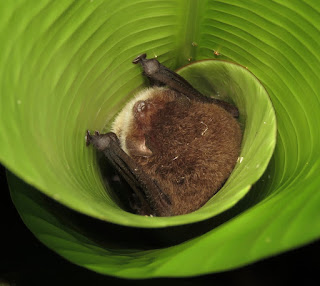April of last year saw me leading two tours, but before I
set off for Jamaica, I built in a layover to visit my older brother and his family
in North Fort Myers. Randy and Michelle have a large yard in the country, and
since they are close to a nature reserve, there is quite a good diversity of
plants, insects, and birds in their yard. One of Florida’s insects that gives it
such a tropical feel is the White Peacock, Anartia jatrophae. I see this
insect on almost every one of my tours in the tropics, but it’s only a rare
vagrant in Arizona.
The primary purpose of the layover was to spend time with
family, and that included my niece and her son. This is he and his grandma, my
sister-in-law, after our visit to the farmer’s market in Fort Myers.
I’ve lost count how many tours I’ve led to Jamaica, but I
don’t tire of it. It’s a lovely country, with really nice people, and still
lots of birds. It’s rare that I see any new birds here (rare migrants and vagrants
are the only possibilities), but being here just one week a year means I still
enjoy seeing the endemics such as this Jamaican Lizard-Cuckoo.
I’m constantly learning more about the other nature on the island.
I’ve seen this passionflower
Passiflora tacsonioides, only a couple times before,
but I hadn’t photographed it in 12 years. It seems to be an uncommon endemic in
the Cockpit Country’s unique limestone karsts.
After my successful tour in Jamaica, I had only three full
days in Tucson. On the middle afternoon, my friend Keith Kamper and I went to
Puerto Canyon (where I went last month) hoping for Buff-collared Nightjar. The
habitat here is perfect, but it’s a small piece of it and far removed from any
other patch.
We didn’t find any, but it wouldn’t surprise me to hear of a
report from here in the future. It’s right in the center of a triangle formed
by the bulk of records in the USA from the canyons in the Atascosa, Santa Rita,
and Baboquivari mountain ranges.
With very little prompt we had great views of this pair of Western
Screech-Owls.
The rest of April was occupied by a private tour to the
Tambopata River of SE Peru with my frequent client Susanne Sourell, who
actually teaches me about fungi while I’m her guide for birds and all other
aspects of natural history. She’s trained my eyes well to search for all manner
of tiny, unassuming fungi, especially the entomopathogenic members of the
family Cordycipitaceae, popularly known as “zombie fungi.” The most amazing one
I found was this Akanthomyces sp. that had infected and killed this
large caterpillar, presumably a saturniid.
Besides the amazing birds and some really cool snakes, my
favorite find of the two-week trip was actually a mammal: this Spix’s Disk-winged
Bat, Thyroptera tricolor. I first read about it years ago in a Costa
Rica field guide and ever since have made it a habit to peer into furled up
leaves of heliconias and prayer plants – hundreds of them, always empty. Except
this time, and I literally squealed and jumped for joy, to Susanne’s
befuddlement, until I showed her what I had found. Its thumbs really are modified
to form perfect suction cups so it can cling to the smooth leaf surface when roosting.













No comments:
Post a Comment